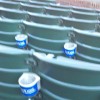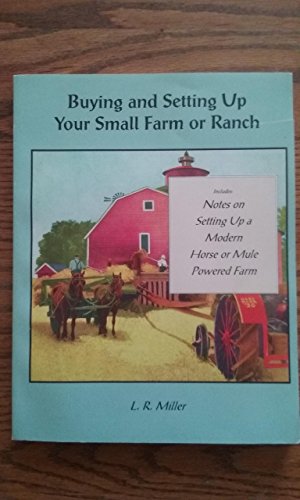Top Plants for Beginning Farmers
Corn Crop
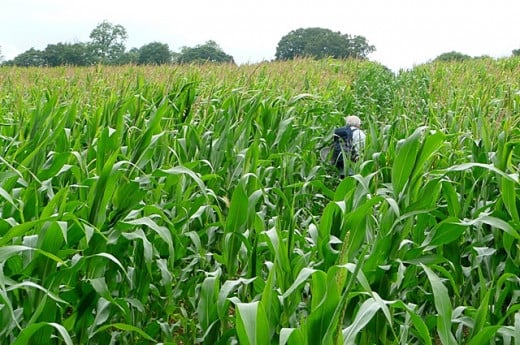
Starting a Farm
Being a farmer at home can be a very rewarding thing to do. Growing your own food is a wonderful way to control what kinds of fertilizers and pesticides are used on the plants. In addition to the overall safety of your homegrown food supply these foods usually just taste better than what you can purchase at your local supermarket. The best explanation for this is that some produce can come from far away to get to your community; the farther it has traveled the sooner it may have been harvested.
Living in the central valley of Northern California we are blessed with a climate that allows a wide assortment of things to grow. We don’t have to worry about snow, with the exception of a weird winter every once in a while, and our summer sun seems to help plants thrive.
Best Fruits and Vegetables
A popular thing to farm is fruits and vegetables. At our house we planted fruit trees the first winter after we moved in and reap the benefits of them each year. I believe we got about twenty pounds of apricots off our one apricot tree this year. This annual bounty is part of the reason my wife wanted to learn how to can and preserve because we cannot simply eat that many apricots, especially since I don’t like them; it is pretty cool to see our kids using apricot jam from our tree in December though.
Depending on what you plant you will either yield something later in the growing season, or you might need to wait a certain amount of seasons before being able to get anything.
Our delta region is pretty famous for growing asparagus; a nearby city even has a festival every year that attracts over one hundred thousand visitors for the three day event. We built a raised bed specifically for some asparagus. For asparagus to root properly it is recommended that you do not cut anything from the plant for three years. The plant will die back every winter and become dormant until the springtime. Next year is the finish line of the three years; it should be fun getting something off of the plants.
The biggest key to farming successful crops is to learn what plants will thrive in your area. If you don’t know your climate zone learn it. You will also need to understand what kind of soil you will be growing in because trees and plants have different needs.
A great example is the clay soil that we have on our property. Clay soil drains very poorly and a cherry tree needs well-draining soil. We tried hard to get a cherry tree to do well in our yard. After the third unsuccessful attempt we took the hint and abandoned our efforts.
Small Farming
Nursery Fruit Trees
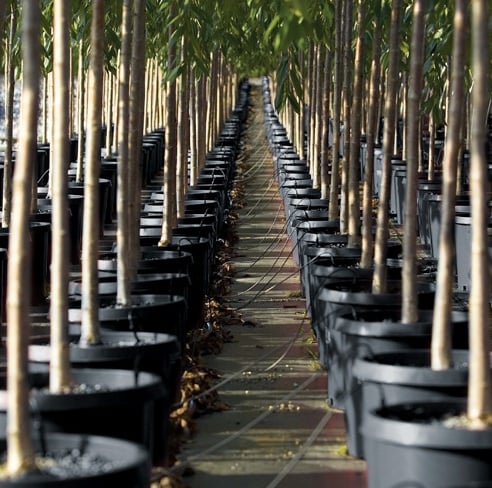
Nursery Centers
A great resource to understand your climate and soil is a local nursery. If you have one in your community, or even nearby, pay them a visit. No disrespect to the nursery people at home improvement stores because I have run across a couple of good ones there too but they cannot compare to the knowledge a nursery can provide.
A local nursery will walk you through everything you need to know and they will probably have a better selection as well. This is a great option, especially if you have a specific tree or plant you are looking for.
We have a small nursery in town and a larger one about twenty miles away. We hit both of them whenever we are getting ready to plant something.
Farmers Market
Do you go to a local farmers market?
Tips For Planting
For some beginners there is a learning curve and that is OK; not everyone is ready to go outside and grow the biggest green thumb in the neighborhood. If you struggle getting plants to take root try considering buying the larger ones. They will cost more than the smaller ones but they have already passed their most vulnerable stages and can take more stress than the smaller ones.
Bigger plants are also able to take more attacks from bugs as well. We had a problem a couple of years ago getting lemon cucumbers to grow. We would plant them and the next morning the bugs had eaten everything except a little stem, the plants would die shortly afterwards.
Pesticides and Do it Yourself Pest Control
We are not fans of pesticides because we are going to eat what we are growing, plus we have chickens and we don’t want them getting accidentally poisoned. To address our cucumber problem we learned to cover the plants with flower pots. We would bury the pot into the soil to keep bugs from tunneling under the pot and feasting on the new plants. We would install the pots in the evening and then remove them in the morning since the bugs were most active at night.
If you are OK with pesticides go ahead and use them but follow the directions as the package indicates.
Crop Dusting

How to Grow Tomato Plants
Growing tomatoes is probably one of the more popular things for a farm. The plants are super easy to put into the ground and don’t take up too much space. They also come in a wide selection of varieties and sizes, even colors.
To successfully grow tomatoes you will need to erect some kind of support system for them because they can get top heavy, especially when they are weighed down by a bunch of veggies.
Metal cages are available at any home improvement store or you can build one out of left over metal fencing; do whatever you feel more comfortable doing on this one. The key is getting the cages up early because trying to put them up after the plant has already grown is a real pain, trust me.
Zucchini Blossoms
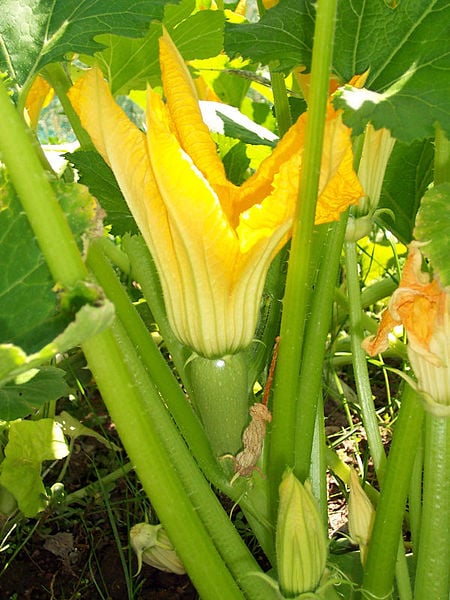
Grow Squash
Squashes, particularly zucchini, are a popular vegetable as well. For me the attraction to growing zucchini is that I can usually get plenty from just one or two plants. Since they provide so much you don’t need a few plants, like you would with many other vegetables.
Another reason that I like growing zucchini is because the ones sold in the store are small and sad. The store usually sells them smaller than bananas and I prefer them just a little bit bigger. Don’t get me wrong they can get too big but I have a personal preference to the average size that I like my zucchini.
Just one warning, when you grow zucchini the little stalks have small pointy things on them that will sort of scratch you when you are trying to harvest the plant. The scratches won’t break the skin or anything but they do get a little bit annoying and might irritate your skin.
Chards
One thing that we kind of accidentally discovered was an easy thing to grow at home is chard. My wife planted some a couple of years ago and these things did very well. Again I don’t like them (I know that I’m picky) but the rest of the family does so we have added it to our seasonal rotations.
They don’t take up too much room and can give you edible leaves for a very respectable timeframe. Just make sure to harvest them as recommended because if you let them grow too long they become tough and not really edible anymore.
Growing Corn
I have always enjoyed growing corn. I can still remember when I was little and my parents planted some corn in our backyard. I don’t know what it is about them but I like watching corn grow.
What makes it a great starter crop for most people is they are very easy to plant and don’t take up too much ground space since they grow up not out.
One thing we have learned about growing corn is what kind of preparation you should take in the soil before planting them. Some plants pull more nutrients out of the ground than others and corn is one of them. To give your crop the best chance of being successful add healthy amounts of compost to the soil and work it in so they have plenty of nutrients available, corn is considered a heavy feeder.
Farms, Farmland and Commercial Farming
Commercial farms have perfected the art of providing food for our planet's occupants. They know what works best for their area and know what is selling for top dollar. These farmers have also become experts at getting the most out of the acreage.
Living out in the country we are surrounded by a few plots of land that are commercially farmed. Call us weird but it is kind of fun, like opening a presents at Christmas, to see what they are planting each year.
There is a large one hundred plus acre section of land that is something different every year. Last year they grew tomatoes, this year it is corn. In the winter they grew a cover crop of what we believe was wheat hay.
We are amazed at how they can keep their rows of crops in perfect lines since we have a hard time doing it in our little garden but I guess that is why they are the professionals and home farmers are still amateurs.
Crop Rotation
One detail that gets overlooked is rotating your crops. As mentioned earlier some plants pull large amounts of nutrients out of the soil and not every plant uses the same nutrients. What this means is planting tomatoes or cord in the same spot every year can sap too much of what they need out of the ground and lead to less than desirable results from your crop.
Switching it up every season should be more than enough to keep the soil ready for what you are growing.
